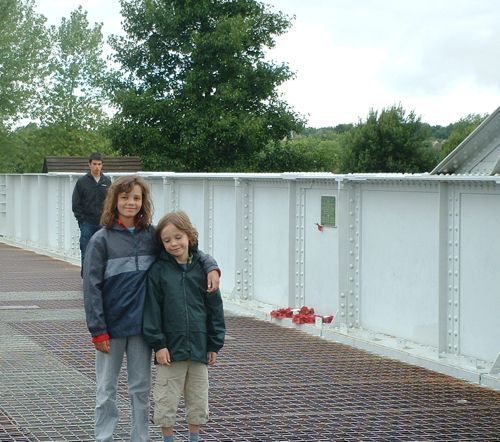Incredibly Major John Howard landed 181 men within 40 yards of the bridge from Gliders which had set off from Dorset. The men who were lost became the first casualties of D Day.
Airborne Museum Pegasus Bridge is small and understated. The role of gliders in the war is explained. There is a reconstruction of a glider (none survived the war as they were not designed to be used more than once). The original bridge is there, complete with bullet holes. The story is movingly told through personal letters and archive film not least because Major Howard returned to shoot the film The Longest Day and relive the whole story with Richard Todd (who apparently was also there in reality) playing him.
There is a naturally a moving memorial to those who died. It is hard to imagine the courage involved to fly a flimsily-built glider (the controls look as if they were made by children) into enemy territory. So many of the men were very young.
 Ranville the village that owns the bridge was the first to be relieved on D Day and there does seem to be a genuine respect and regard from the French for the courage and sacrifice not just in memorials and museums but the flags flown on public buildings and the affection shown to visitors.
Ranville the village that owns the bridge was the first to be relieved on D Day and there does seem to be a genuine respect and regard from the French for the courage and sacrifice not just in memorials and museums but the flags flown on public buildings and the affection shown to visitors. This is a reflective, sobering and worthwhile diversion from the usual holiday activities. None of which we would be taking without the sacrifice captured here.
Airborne Museum Pegasus Bridge, Avenue du Major Howard, 14860 Ranville, is open from February to November each year; summer opening times 09.30 to 18.30.
